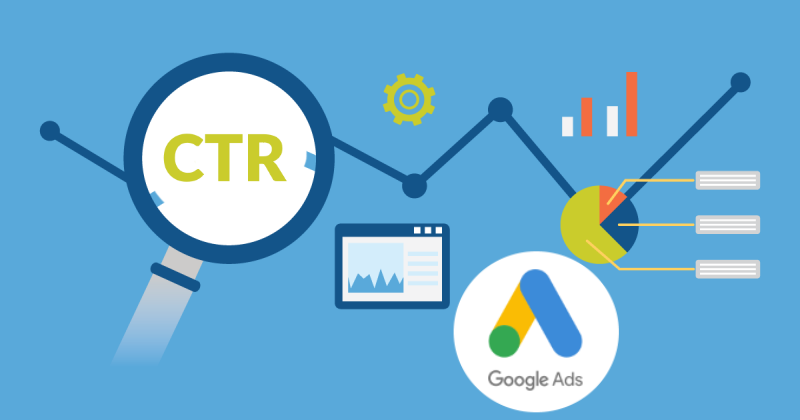Post map
ToggleRunning ads on Google platforms has become an indispensable part of online marketing strategies for many businesses. It’s not just a trend but also a crucial need to reach customers and enhance business performance. However, to ensure that these advertising campaigns are carried out effectively and efficiently, identifying and tracking Key Performance Indicators (KPIs) is essential. In today’s post, Optimal FB will explore the concept of Google Ads Metrics definitions and the key KPIs to consider when running advertising campaigns on Google platforms.
Google Ads Metrics definitions
Google Ads Metrics, or Key Performance Indicators Google Ads, are important metrics for evaluating the performance of advertising campaigns on Google. KPIs are metrics used to measure and assess the success of a campaign through data, ratios, quantitative targets, and budgets utilized. These KPIs reflect the achievement of business goals, a specific department within the business, or even individual aspects within Google Ads campaigns. The main goals of a Google Ads campaign are typically determined based on these KPIs. Advertisers set goals and then track progress to achieve those goals. Each goal in Google Ads usually comes with a set of different performance metrics.
Through the outlined KPIs, advertisers can evaluate the effectiveness of each goal in Google Ads campaigns. KPIs provide a basis for evaluating the overall work effectiveness and specific metrics most accurately. This helps advertisers understand the performance of campaigns better and enables them to adjust advertising strategies flexibly and scientifically.

Evaluate the effectiveness of Google advertising campaigns through which indicators?
To track and evaluate campaigns in a detailed and comprehensive manner, you need to pay attention to specific metrics such as:
Impressions
Formula: Impressions = Reach * Frequency
Impressions, or Reach, are an important part of measuring the effectiveness of advertising on online platforms. Impressions are calculated by multiplying Reach (the number of people reached by the ad) by Frequency (the average number of times the ad is displayed to each person). Impressions are often considered a basic but crucial metric because they indicate the number of times your ad is displayed on the screen. However, it’s important to note that Impressions only represent ad appearances, not whether users notice or interact with them.
A simple way to understand Impressions is that it counts the number of times your ad appears in front of users. For example, if an ad is displayed 20 times but reaches only 15 different people, the Reach is 15 and the average Frequency is 1.33 (20/15). This can be better understood through a specific example: If Impressions are 20 but Reach is only 15, it may mean that your ad has appeared 10 times in front of people in group A and 5 times in front of people in group B. This indicates that some of your ad content has been repeatedly displayed to the same person, leading to a discrepancy between Impressions and Reach.
Cost per Thousand Impressions (CPM)
Formula: CPM = (Total Ad Spend / Impressions) * 1000
CPM, or Cost Per Thousand Impressions, is an important measure in evaluating advertising campaigns’ effectiveness. On Google platforms, CPM is calculated by dividing the total amount you spend on advertising by the number of impressions, then multiplying by 1000. CPM is the cost you pay for every 1000 ad impressions, regardless of whether users pay attention to it. Therefore, CPM is often used in branding-focused advertising campaigns, where the main goal is to create recognition and a deep impression in customers’ minds.
For example, if you spend 10 million dong on an advertising campaign and receive 10,000 impressions, your CPM will be 1 million dong. This means you will pay 1 million dong for every 1000 ad impressions.
Click-through rate
Formula: Click-through rate = (Clicks / Impressions) * 100
So, let’s say your ad content was displayed 1000 times and received 100 clicks from users. Our Click-Through Rate (CTR) is 10%. If you want to increase your CTR higher, you can do it in two ways: increase the number of impressions to increase your chances of being clicked or improve the quality of your content to attract more engagement. The CTR index is often used to evaluate the effectiveness of advertising campaigns. In addition, it is also used to evaluate the quality of the landing page. According to studies, the average CTR rate on Google for all industries is around 0.9%. Industries with higher CTR rates than average include Retail (1.59%), Clothing (1.24%), Beauty (1.16%), Technology (1.04%) and Fitness (1.01%).

Cost per click
Formula: Cost per click Cost per click = Money spent / Clicks
CPC stands for Cost Per Click, which means Cost per Click. This is a payment method in online advertising, especially in advertising campaigns on Google Ads. When using CPC, advertisers only pay when someone clicks on their ad, regardless of whether a subsequent action is taken or not. CPC is usually determined based on a fixed price per click, and advertisers can set a daily budget limit or maximum cost they are willing to pay.
In the above article, Optimal FB has listed the most accurate detailed information. We hope that the content we share can help you learn about the concept of indexing Google ads and track and evaluate important indicators for a successful Google advertising campaign.
Contact Info
We provide services facebook dropship ads nationwide, and with a team of experienced and qualified staff who both support advertising and can directly perform Facebook advertising if you need. Contact us via phone number: +84 564 104 104 for detailed advice.
Frequently asked questions
ROI in Google advertising stands for “Return on Investment”. This is an important index that measures the effectiveness of an advertising campaign on Google by comparing the profit earned from that campaign with the total cost invested. ROI helps advertisers understand how profitable their Google ad spend is and adjust their strategy to optimize profits. For an effective advertising campaign on Google, the ROI is usually high, meaning the profits exceed the investment costs.
The CPA metric in Google Ads stands for Cost Per Acquisition, which means Cost per Conversion Action. This is a key metric in online advertising, measuring the average cost an advertiser must pay to obtain a specific conversion action, such as a purchase or a sign-up. CPA is calculated by dividing the total advertising cost by the number of conversions. This helps advertisers evaluate the effectiveness of their advertising campaigns and adjust their advertising strategies to optimize CPA.



